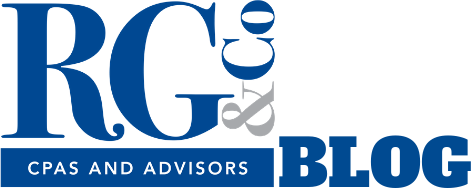Three opinions that I have accepted as fact for as long as I can remember:
- The Earth is round.
- Beer is good.
- It’s ALWAYS best to be a passthrough entity for tax purposes.
While I don’t want to get into a Flat Earth debate or offend any beer snobs out there, I do want to dive into the latter opinion on passthrough entity taxation as always being the best method for tax structure. Passthrough Entity is normally the general recommendation of choice to avoid the dreaded double taxation of C corporations. No one wants to pay tax on their corporate earnings and then get taxed again at the shareholder level when you distribute those earnings to shareholders.
But there is one big benefit to certain C corporations that is worth analyzing if that potential benefit can be greater than the detriment of double taxation of C Corporations.
What’s the big tax benefit I speak of? It happens to be one of the most underutilized Code Sections of all – Section 1202. Most tax practitioners, and most clients, have never heard of Section 1202. The powerful benefit of Section 1202 is that it currently allows a non-corporate shareholder to exclude up to 100% of the gain on the sale of Qualified Small Business Stock up to $10 million if held for more than 5 years (actually in certain situations it can yield an exclusion greater than $10 million).
The purpose of Section 1202 was to provide targeted relief to investors who risk their funds in new ventures and small business. It was originally enacted as part of the Revenue Reconciliation Act of 1993 and at the time the exclusion was only 50%. Then, most tax advisors didn’t pay much attention to Section 1202 as most felt the potential benefit wasn’t worth the detriment of double taxation, so it mainly went unused.
Fast forward to a 100% exclusion (for stock issued after September 28, 2010), which was made permanent in 2015 as part of the Protecting Americans from Tax Hikes (PATH) Act, and now we shouldn’t ignore the powerful benefit of using Section 1202 as an option when considering tax structure. The lowering of the federal corporate tax rate to 21% under the Tax Cuts and Jobs Act of 2017 makes the switch to C corporation less burdensome.
Basic requirements for Section 1202 Gain Exclusion when the stock is issued:
- C Corporation requirement at the date of stock issuance and only applies to stock issued after August 9, 1993.
- Qualified Small Business Requirement – very liberally defined as gross assets of the corporation must not have exceeded $50 million.
- Original Issuance requirement – must be acquired directly from the issuing corporation in exchange for money or property or as compensation for services provided by the corporation. Stock purchased from an existing shareholder in a cross purchase will NOT qualify.
- Five year holding period requirement.
Additional requirements for Section 1202 Gain Exclusion that must be met for substantially all the shareholder’s holding period:
- The corporation must be a C corporation.
- The corporation must satisfy the Active Business Requirement where at least 80% of the assets of the corporation must be used by the corporation in the active conduct of one or more qualified trades or businesses (certain businesses including professional services, banking, insurance, farming, mining, hotels, and restaurants are excluded from using the Section 1202 Gain Exclusion). There is also working capital limitation as part of the Active Business Requirement.
So, you may be thinking this is too good to be true, that there must be a catch. Is Uncle Sam really going to let you sell your business after five years for $10 million and you don’t owe a dime? Well, it’s not as hard as convincing a Flat Earther that the world is round but there are some definite hurdles you must overcome to achieve Section 1202 Exclusion Treatment.
Assuming you meet the above-mentioned requirements, the biggest hurdle is that this locks you into selling the company stock. Selling the assets or a Section 338(h)(10) stock sale is off the table because of the double tax C corporation structure. Buyers generally want to buy assets or partnership/LLC units where the buyer receives a stepped-up basis on the purchase. There is a potential risk that the buyer may try to negotiate a discount on the purchase to compensate them for not receiving a step-up in basis on the purchase.
The next hurdle you’ll want to document is that you’ve met these various requirements well before any potential sale. It’s not going to be pretty if your Section 1202 Gain Exclusion is thrown out under IRS audit because of weak documentation. My stomach hurts just thinking about that outcome (or maybe it was the hoppy IPA I just drank).
What industry is best suited for Section 1202 Gain Exclusion?
We see companies in the technology industry more willing to embrace a Section 1202 stock sale exit more than other traditional industries. The main reason is that the exit in a technology company results in the shareholders receiving their value in the company rather than through annual profit/cash distributions of the company. Some technology companies may be breakeven annually for tax purposes so there would be minimal annual profit/cash distributions, which makes the C corporation structure less problematic. Also, the acquiring companies in the technology industry are more willing to buy the stock than other industries. The acquiring technology company may also not be driven by annual profit/cash distribution and thus less concerned with a step-up in basis, but instead are focused on increasing their company value for their own company exit.
Now, you may be asking, what if I have an existing passthrough entity? Is it too late to take advantage of Section 1202?
Maybe not. It is possible to restructure to plan for a future transaction (that occurs more than five years after the restructuring) that could benefit from the Section 1202 gain exclusion. But you’ll need to carefully plan for the restructuring with a professional with Section 1202 experience.
If you have an existing S corporation, you can NOT simply revoke your S election and seek Section 1202 gain exclusion, as the original shares in the S corporation were not issued when the corporation was a C corporation; those original shares will never qualify for Section 1202 treatment.
However, there is an opportunity for an S corporation to restructure and form a C corporation subsidiary that could potentially qualify for Section 1202 Exclusion. The C corporation subsidiary will need to meet the above-mentioned requirements including the five-year holding period requirement. An LLC taxed as a partnership has an easier path as, the majority of the time, it can directly convert to a C Corporation in a tax-free conversion. The converted C corporation will still need to meet the above-mentioned requirements including the five-year holding period requirement.
One important thing to remember under this planning technique is that only the appreciation subsequent to restructuring will possibly qualify for Section 1202 treatment, so the valuation of the company is important to document prior to the restructuring. Our Valuation and Advisory department says the time is right for lower valuations due to the uncertainty faced by businesses, caused by the pandemic. Market multiples are down compared to pre-pandemic multiples and risk is up. Both of these factors generally equate to lower valuation.
If you would like assistance with planning for a Section 1202 transaction or with documenting that you’ve met the Section 1202 requirement, please contact our office.




